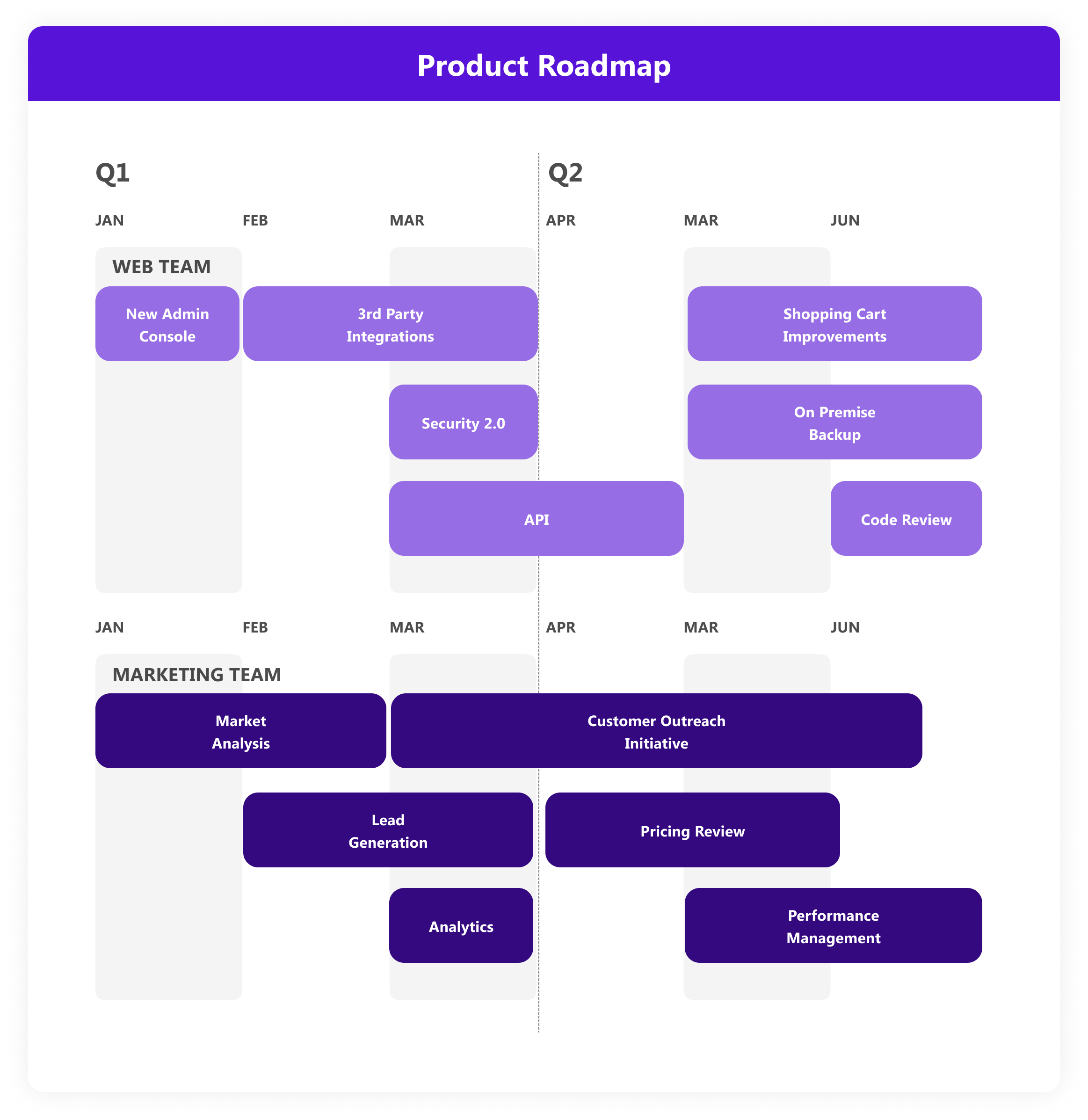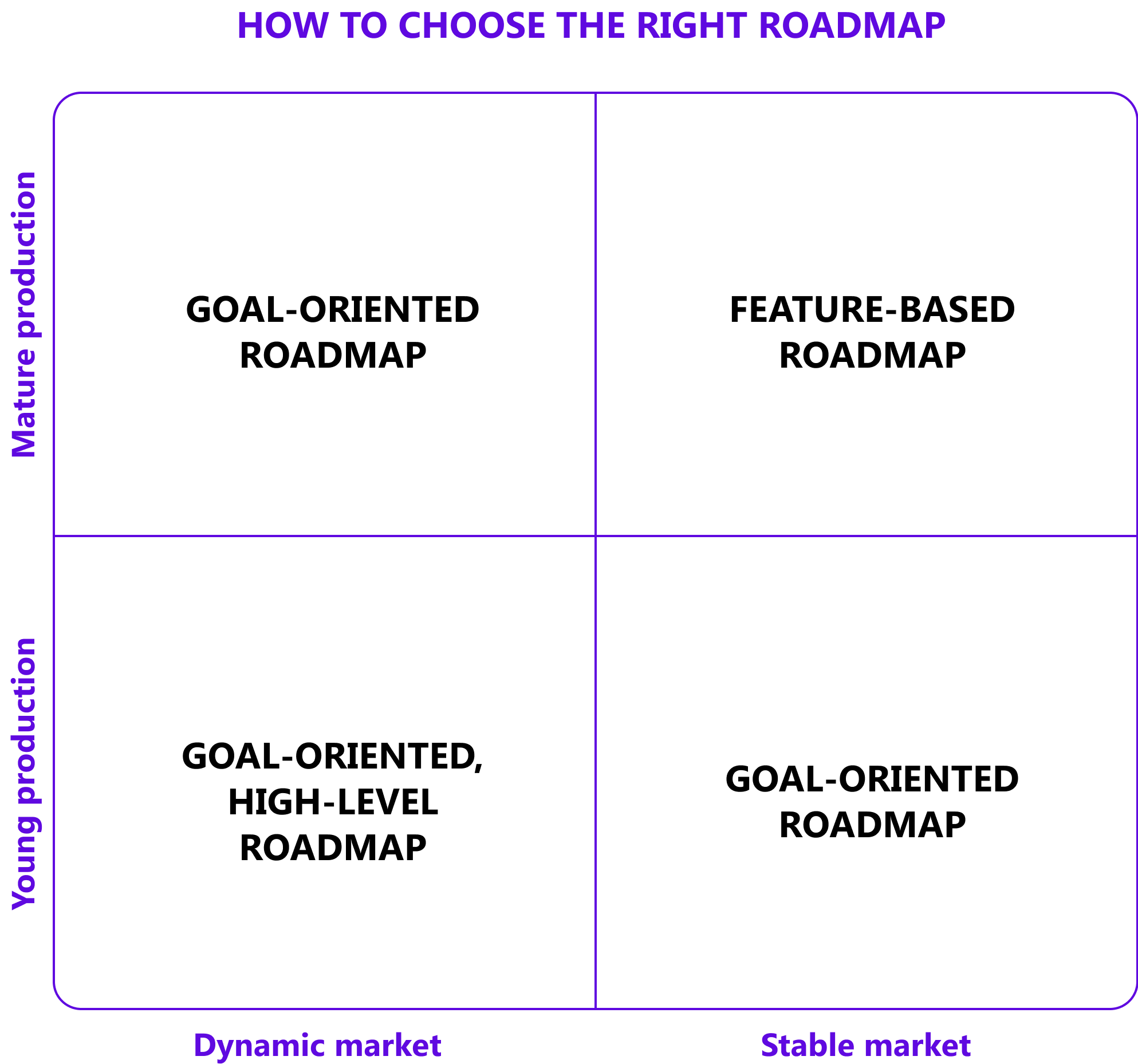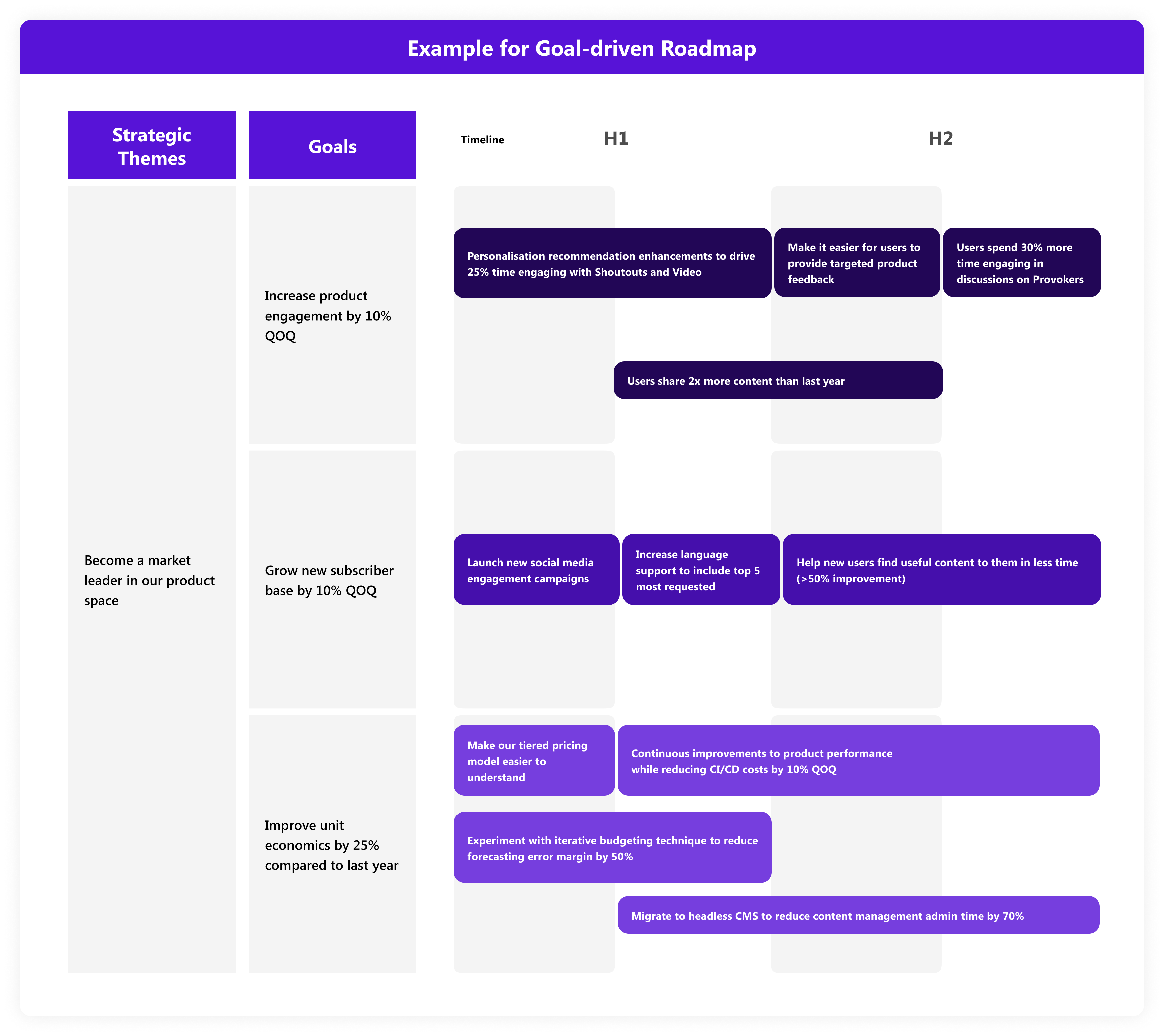¶ Product Roadmap
¶ What it is
A product roadmap is a plan that provides a series of tactical steps consistent with the product strategy and the track to push the product in the predetermined direction.
¶ Why it is useful
Roadmaps help link goals to efforts by showing the time frame. It enables the management level to understand and plan the needed resources as a valuable tool for communication and progress tracking against the product objectives to stakeholders.
¶ When to use
Early when the Business Requirement Document of the project is under discussion in the steering committee meeting, a product roadmap should have already come into being to convey the business strategy.
When the project is initialised, at the project kickoff meeting, this roadmap should also be presented to the whole team.

¶ How is it done
Before creating a roadmap, you should see how to present its essential Information. First, sort out the following elements of your roadmap:
1. Timeline: A timeline is one of the keys to a roadmap. It shows the team what’s ahead to complete, what dependencies to resolve, and how many resources are available.
2. Task descriptions: The task list should be high-level when on a roadmap. This helps sort out the priorities, responsibilities, and time resources respectively.
3. Goals based on phases: The measurable results should be put on the roadmap at each phase to judge the progress and achievements.
4. Overall vision: Every element on the roadmap is supposed to justify the product vision, helping understand the story better.
Then follow the following steps:
1. Identify and decompose product requirements.
2. Classification and grouping of product requirements
3. Prioritisation and estimation of product requirements
- Rate user value and business value of requirements
- Rate feasibility and efforts
- Prioritise requirements
4. Define timeframes
¶ Do's & Don't
Do's
- Think about the purpose and audience of the roadmap for the current phase of the product and project.
- Use the right words and terms to make the roadmap understandable and concise.
- Do version management of roadmaps.
Don't
- Don’t mix in the roadmap with elements that serve other purposes, e.g., goal or feature.
- Don’t put too many details in the roadmap.
¶ Tools needed
¶ Useful Tips
¶ Product Roadmap
Goal-oriented and feature-oriented roadmaps are the most frequently used types. How to distinguish them?
- A goal-oriented Roadmap focuses on goals or benefits and specifies when to complete what kind of goals.
- A feature-oriented roadmap is based on product function points, such as the registration function, search function, report function, etc. These functions will eventually be mapped to a timeline.
How to select a product roadmap format?
- If your product or market needs frequent changes, I suggest you use a targeted Roadmap. It would be best to use a function-oriented Roadmap only when your product is mature and the market is stable.

¶ Example
